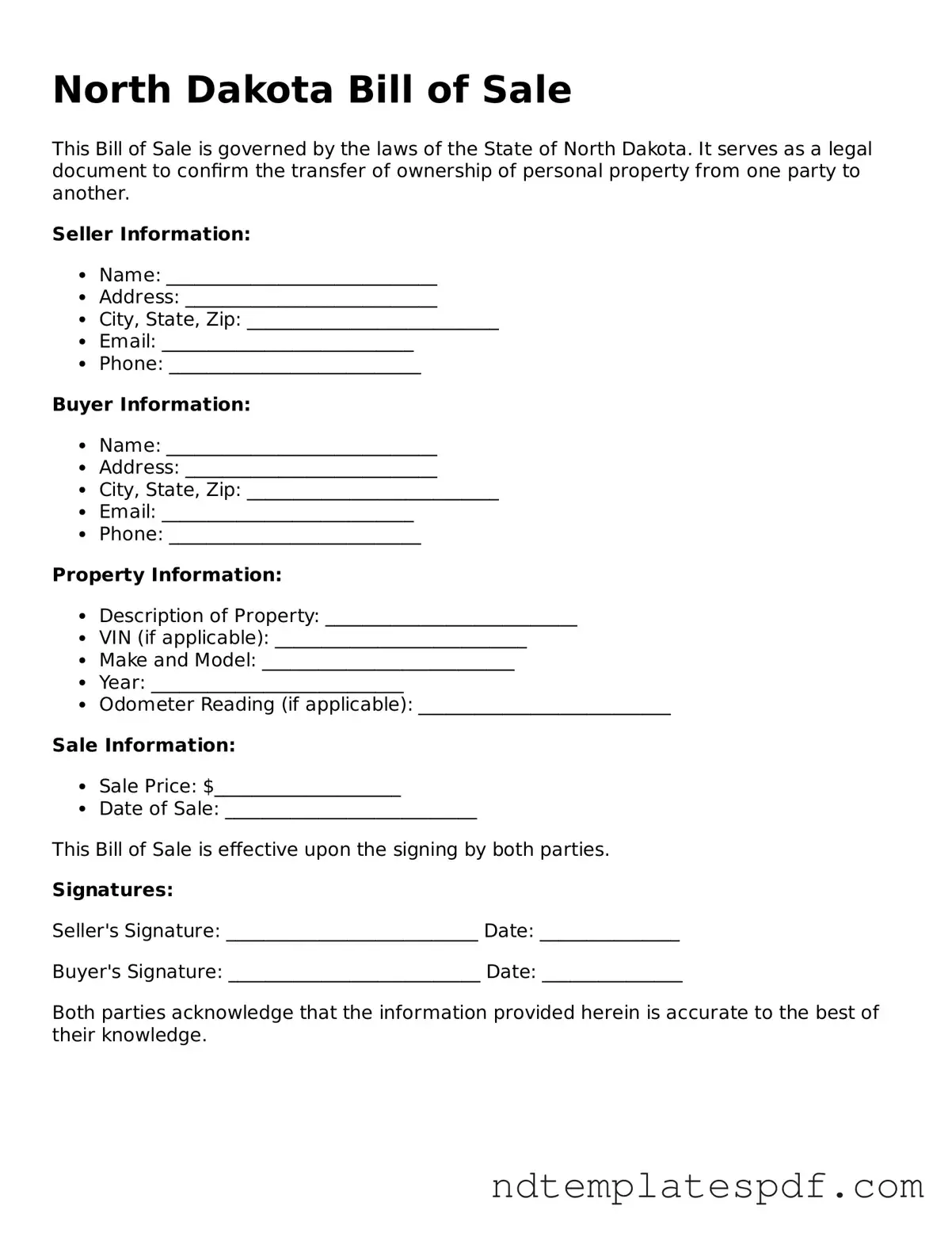Legal North Dakota Bill of Sale Document
A North Dakota Bill of Sale form is a legal document that records the transfer of ownership of personal property from one party to another. This form serves as proof of the transaction and outlines essential details such as the buyer, seller, and description of the item. Understanding how to properly complete and use this form can help ensure a smooth transfer process.
Fill Out Document Now
